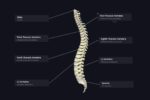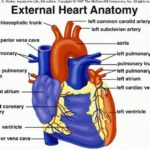Shoulder and Back Muscles
The shoulder and back muscles are crucial components of the human musculoskeletal system, contributing to our ability to move and perform various physical activities.
houlder Muscles
The shoulder muscles, which surround the shoulder joint, provide support and facilitate movement. They connect the upper limb’s appendicular skeleton to the axial skeleton of the trunk.
1. Anterior Axio-appendicular Muscles: These include the Pectoralis Major, Pectoralis Minor, Subclavius, and Serratus Anterior. The Pectoralis Major covers the anterior thoracic cage and enables adduction and internal rotation of the arm.
2. Posterior Axio-appendicular Muscles: These consist of the Extrinsic muscles (Trapezius, Latissimus Dorsi, Levator Scapulae, Rhomboid Major, Rhomboid Minor) and Intrinsic muscles (Deltoid, Teres Major, Rotator Cuff muscles – Supraspinatus, Infraspinatus, Teres Minor, Subscapularis). The Deltoid is the largest shoulder muscle, covering the glenohumeral joint and giving the shoulder its rounded-off shape.
Back Muscles
The back muscles are divided into two groups based on their location and function:
1. Extrinsic Back Muscles: These muscles are located in the back but act to produce movements of the shoulder and assist respiration. They include the Trapezius, which elevates and retracts the shoulders, and the Latissimus Dorsi, which helps the arms rotate and move away and closer to the body.
2. Intrinsic Back Muscles: These muscles are found deeper than the extrinsic muscles and act exclusively upon the joints of the vertebral column.
These muscles work together to support the body’s structure, enable movement, and protect vital organs. However, overexertion or injury can lead to muscle pain, which is a common ailment. Minor shoulder and back muscle pain can usually be healed with a combination of rest, ice, elevation, and compression of the impacted region..



